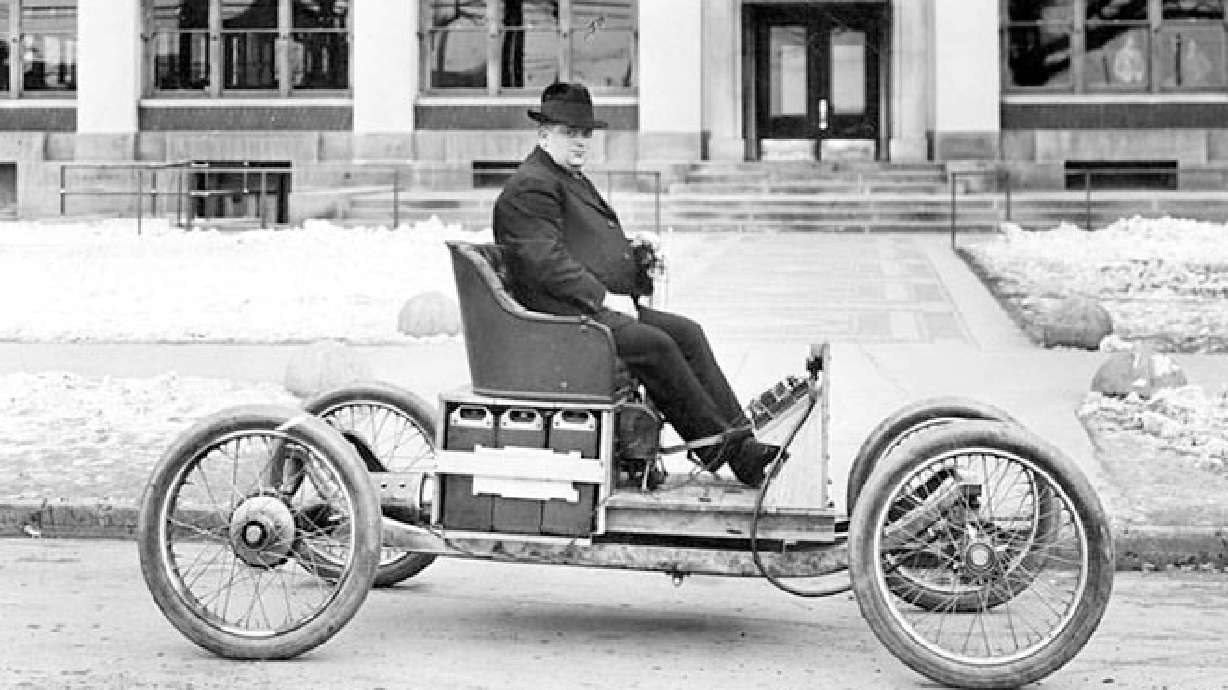Estimated read time: 2-3 minutes
This archived news story is available only for your personal, non-commercial use. Information in the story may be outdated or superseded by additional information. Reading or replaying the story in its archived form does not constitute a republication of the story.
PALO ALTO — Thomas Edison gave us the modern light bulb, telephone technology, and dozens of other inventions and developments in technology that affect us each day. It turns out the battery Edison helped invent in the early 20th century could be the next step in getting us from point A to point B in electric vehicles.
The nickel-iron battery, or Edison battery, was developed by Edison in order to power electric vehicles. He had previously encouraged Henry Ford to begin serious development of the internal combustion engine, but later advocated the use of electricity in propelling Americans around town.
"Electricity is the thing. There are no whirring and grinding gears with their numerous levers to confuse. There is not that almost terrifying uncertain throb and whirr of the powerful combustion engine," Edison said, criticizing gasoline engines.
Now, scientists at Stanford have revived the nikel-Iron battery, which lost favor in the 70s and have improved its performance by a thousand times. What previously took hours to charge entirely now only takes minutes to charge and disburse power.

"Hopefully we can give the nickel-iron battery a new life," said Hongjie Dai, a chemistry professor at Stanford who worked on the project.
Edison batteries were in common use up into the 70s inside various kinds of vehicles, but now only find common use in wind turbines and solar generators. They used to have a very long charge time and a very slow discharge. But the latest wonder-substance, grapheme, has completely changed the game for the Edison battery.
In conventional electrodes, people randomly mix iron and nickel with conductive carbon. Instead, we grew nanocrystals of iron oxide onto graphene, and nanocrystals of nickel hydroxide onto carbon nanotubes."
The conductive properties of graphene, a one-atom thick sheet of carbon in a honeycomb pattern, allow the battery to be charged up in two minutes and discharge in seconds. That's perfect for certain applications, like helping electric cars accelerate very fast, something that lithium-ion batteries are not very good at. Edison batteries have relatively smaller energy density, but can be fully charged ultra-fast. That makes the perfect in a sort of tag-team electric car beside Lithium batteries.
There could also be applications anywhere something needs to be charged very fast, like on a battlefield. The batteries are cheap because nickel and iron are abundant and inexpensive, and very safe because the materials are non-corrosive and relatively non-toxic.
While Henry Ford's gas engine may have dominated during the last century, Edison's battery could mean his vision or roads filled with electric vehicles may win out in the end.
The results of this research will be published in the latest issue of Nature.









